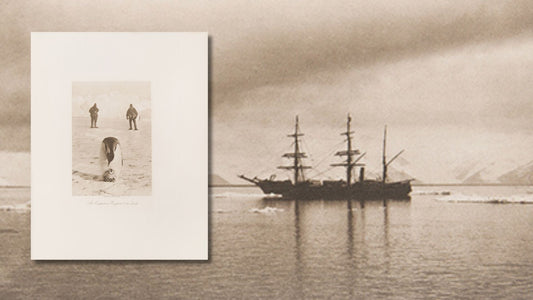The Layered Legacy of Captain Cook

On the birthday of Captain Cook, we look back at an article from the archive by our Travel expert (and fount of bibliographic knowledge), Julian Mackenzie, in which he explored how Cook changed the face of exploration forever.

Whitby, a small town on the East coast of Yorkshire, has a fame which belies its modest population (circa 13,000). The ruined Abbey on a hill above the town is where Count Dracula came ashore in England in Bram Stoker's novel. It was the Synod of Whitby, between the Roman and Celtic Churches in 664 that determined the dates of Easter. It is also the breeding ground for some of the finest oysters in England. Its greatest fame, however, is the adopted town of Captain James Cook - a man who can fairly claim to be the greatest explorer of the modern era - and where his first great ship, HMS Endeavour, was built.
In three great voyages, Cook did more to clarify the geographical knowledge of the southern hemisphere for Europeans than all his predecessors had done together. He was the first scientific navigator, and his voyages greatly contributed to many fields of knowledge.
The first voyage (1768-1772) under Cook’s command on the Endeavour was primarily scientific, the mission being to observe the transit of Venus at Tahiti. Having carried out his duties, Cook sailed on to New Zealand, which he circumnavigated and surveyed, before going on to Australia where he discovered and named New South Wales. Both Australia and New Zealand were annexed as a result of this voyage, which was also notable at the time because none of the crew had died from scurvy.
The second voyage (1772-1776) on HMS Resolution, accompanied by the Adventure, was an expedition searching for a southern continent. Cook disproved the existence of the fabled Terra Australis, supposed to exist between New Zealand and South America, but became convinced that there was land beyond the ice-fields. This expedition became the first to cross the Antarctic Circle. From here Cook would discover, and rediscover, Easter Island, the Marquesas, New Hebrides, Tahiti, Tonga, and many other island groups. After rounding Cape Horn, he discovered and charted South Georgia. It was this voyage, which produced a vast amount of information concerning the Pacific peoples and islands, that would prove the value of the chronometer as an aid in determining longitude.
Cook’s third and final voyage (1776-1780), also undertaken on the Resolution and later joined by the Discovery, was an expedition in search of the Northwest Passage with a remarkable crew, including William Bligh, George Vancouver and James Burney. After calling at Tasmania and New Zealand, Cook sailed north, discovering Christmas Island and the Sandwich Islands, (later named the Hawaiian Islands). Cook charted the American West coast from Northern California through the Bering Strait before being stopped by pack ice at latitude 70° 44'. It was in 1779, whilst wintering over at Hawaii that he was killed in a fracas with natives over a boat, during which he attempted to kidnap and ransom their king, Kalani'ōpu'u.
His discoveries aside, Cook’s lasting legacy lies in the formation of the Royal Navy Survey Squadrons and the admiralty charts that laid the basis for all modern expeditions up to modern times: a direct compliment to his great skill as a draughtsman and surveyor.
Captain Cook's three great voyages form the basis of any collection of Pacific books.
Discover more: Captain Cook




